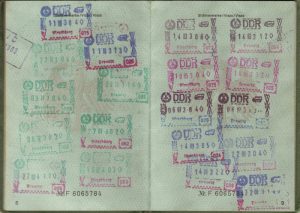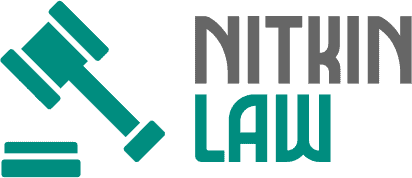Applying for an EB-1 visa is a significant milestone for individuals of extraordinary ability, outstanding professors and researchers, and multinational executives. The EB-1 visa is a pathway to permanent residence in the United States, but it requires thorough documentation to prove that the applicant meets the stringent requirements. This guide will walk you through the process of collecting and presenting evidence to support your EB-1 visa application, ensuring that your accomplishments are accurately and effectively presented.

Understanding the EB-1 Visa Criteria
Before you begin gathering evidence, it’s important to understand the specific criteria required for the EB-1 visa. The EB-1 category is divided into three sub-categories:
- EB-1A: For individuals with extraordinary ability in fields such as science, the arts, education, business, or athletics.
- EB-1B: For distinguished professors and researchers.
- EB-1C: For multinational executives and managers.
Each subcategory has its own set of criteria. For example, EB-1A applicants must show that they have achieved sustained national or international acclaim, while EB-1B applicants must show international recognition for their academic work. Understanding these criteria will help you select the most relevant accomplishments and the types of evidence required.
Identifying Relevant Achievements
Once you are familiar with the EB-1 criteria, the next step is to identify the accomplishments that best demonstrate your qualifications. These may include
- Awards and Honors: Document any significant awards or honors you’ve received, especially those that are internationally recognized.
- Published Work: Include articles, books, or research papers you have written that contribute to your field.
- Media Coverage: Collect news articles, interviews, or profiles that highlight your work and accomplishments.
- Memberships: If you belong to professional organizations, especially those that require outstanding service for membership, include this documentation.
- Judging or Reviewing: Evidence that you’ve served as a judge or reviewer of the work of others in your field can be compelling.
- Performance or Presentation Records: For those in the arts, records of performances, exhibitions, or presentations are critical.
Gathering Documentation
Once you have identified your key deliverables, the next step is to gather the documentation that supports each one. The type of documentation will vary depending on the accomplishment:
- Certificates and diplomas: Ensure that all educational qualifications are documented with certified copies of diplomas and transcripts.
- Awards: Obtain official letters or certificates from awarding bodies and, if possible, include explanations of the award’s significance.
- Publications: Collect copies of your published work, along with information about the impact and reach of the publication.
- Letters of Recommendation: These should be from individuals who are recognized experts in your field and can attest to your accomplishments.
- Media Articles: Collect clippings of newspaper or magazine articles, along with translations if they are not in English.
- Memberships: Provide proof of membership, including documentation of the membership criteria and how you met them.
Organize evidence for maximum impact
Organizing your documentation in a logical and compelling manner is critical. The evidence should be presented in a way that clearly aligns with the EB-1 criteria:
- Create a Master List: Start by listing all of your accomplishments and supporting evidence. This list will help you make sure you’ve covered all the criteria.
- Group by Criteria: Organize your documents by the specific EB-1 criteria they address. This will help immigration officers quickly see how you meet each requirement.
- Use a Table of Contents: If your evidence is extensive, include a table of contents at the beginning of your submission to guide the reader.
- Include Explanatory Notes: For each piece of evidence, include a brief explanation of its significance and how it demonstrates your exceptional ability.
Writing a Compelling Personal Statement
The personal statement is your opportunity to tell your story and link your accomplishments to the EB-1 criteria. This statement should:
- Summarize your career: Provide an overview of your career path, highlighting key accomplishments.
- Explain the significance of your work: Describe how your work has impacted your field and why it is considered exceptional.
- Link to EB-1 Criteria: Explicitly link your accomplishments to the specific EB-1 requirements and demonstrate how you meet each one.
Working with Referees
Letters of recommendation are an important part of your EB-1 petition. To maximize their impact:
- Choose the Right Endorsers: Select individuals who are respected in your field and who can speak authoritatively about your work.
- Guide Their Letters: Provide your recommenders with a summary of your accomplishments and the EB-1 criteria they should address. This will ensure that their letters are focused and relevant.
- Seek multiple perspectives: Collect letters from a variety of professionals who can highlight different aspects of your work.
Presenting your case to immigration officials
When presenting your case, it’s important to remember that immigration officers may not be experts in your field. Therefore:
- Avoid jargon: Use clear and simple language to explain your accomplishments.
- Provide context: When discussing your work, explain its significance in a broader context that is understandable to a layperson.
- Be concise: While thorough documentation is important, avoid overwhelming the officer with excessive detail. Focus on the most compelling evidence.
Learn from successful cases
Studying successful EB-1 cases can provide valuable insight into how to structure your application. Look for examples of applicants with backgrounds similar to yours and examine
- How they presented their accomplishments: Note the types of evidence they used and how they aligned it with the EB-1 criteria.
- The role of personal statements and letters: Pay attention to how they wrote their personal statements and the content of their letters of recommendation.
- Strategies for Complex Cases: If your case is complex, look for examples of how others have successfully overcome similar challenges.
Common pitfalls and how to avoid them
Even strong candidates can make mistakes that weaken their applications. Common pitfalls include
- Incomplete Documentation: Ensure that all your evidence is complete and properly certified where required.
- Overly Technical Explanations: Remember to explain your work in terms that are accessible to non-experts.
- Ignore criteria: Don’t assume that an impressive accomplishment speaks for itself. Explicitly link each piece of evidence to the relevant EB-1 criteria.
Maximize your chances of success
Applying for an EB-1 visa is a rigorous process, but with careful preparation and organization, you can present a compelling case. Start by thoroughly understanding the criteria, then carefully gather and organize your documents. Write a personal statement that clearly demonstrates how your accomplishments meet the EB-1 requirements, and work closely with your recommenders to ensure that their letters are strong and relevant.
By following these steps, you will maximize your chances of success and move closer to obtaining an EB-1 visa, opening the door to new opportunities in the United States.

